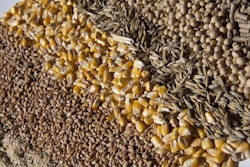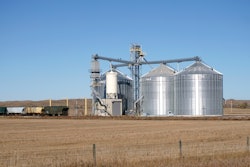
Programs to help U.S. farmers build markets overseas boosted agricultural exports by an average of $9.6 billion annually from 1977 to 2019, an annual lift of 13.7% in export revenues and returning $24.5 for every dollar invested.
Those are the key conclusions from anew studyprepared to evaluate the impact of programs administered by theU.S. Department of Agriculture’s Foreign Agricultural Service(USDA's FAS), including theMarket Access Program (MAP)andForeign Market Development (FMD)program.
TheU.S. Grains Council (USGC), the organization that建立海外市场的饲料谷物和乙醇l, led the study’s preparation on behalf of FAS and the cooperator community.
"We were glad to participate in this effort to demonstrate the long-term impact of the programs that help our members expand markets and our customers build their operations and further serve their local consumers," said Ryan LeGrand, USGC president and CEO.
"We know from our history that our work helps, as our mission says, improve lives. This study helps us put numbers to those outcomes for our organization and our whole sector within the agriculture industry."
Agriculture investment impact
Developed byIHS Markitin cooperation with Dr. Gary Williams and Dr. Oral Capps atTexas A&M University, both experts on evaluating the economic performance of trade promotion programs, the study updated a 2016 edition also evaluating MAP and FMD, which are currently authorized by the 2018 Farm Bill. The new study also took a first look at the impact of investments through the Agricultural Trade Promotion (ATP) program.
The study’s results supported the conclusions of prior studies of USDA export market development programs, finding they are “highly effective at generating an extremely high return on investment and account for a high percentage of the level of U.S. agricultural exports.”
It reported that market development programs effectively leveraged cooperator and industry contributions, averaging between 70-77 percent of expenditures from 2013 to 2019, valued at an estimated annual average of $567 million.
Using econometric models to examine the impact of market development programs on bulk/intermediate and high-value commodity exports - including seafood, forest products and ethanol for the first time - the research generated results that were then used to assess the impact on the general economy.
Market development investment
Though not strictly comparable, reported results were similar and consistent to prior studies conducted since 2006 that suggested the program investments are highly effective.
The study found that from 2002 to 2019, market development investment:
- Increased farm cash receipts by $12.2 billion (3.4 percent)
- Benefited the overall economy with an additional $45 billion annually in economic output and $22.3 billion annually in gross domestic product
- Created an estimated 225,800 jobs across the entire economy
Cooperating organizations
The ATP program offered $300 million to cooperating organizations, to which they added $90 million in contributions of cash and goods and services, primarily from farmer organizations. Between 2019 and 2026, these cumulative investments are projected to generate:
- $11.1 billion in additional agricultural export revenue, about $1.4 billion annually
- $6.44 billion in farm cash receipts, about $810 million annually
- $11.2 billion added to the U.S. GDP, about $1.4 billion annually
“The results of this work support the conclusions of previous studies showing USDA export market development programs, into which both taxpayers and the ag industry invest, are highly effective at generating an extremely high return on investment and account for a high percentage of the level of U.S. agricultural exports despite the different analytical methods used, different time periods of the studies, and different data sets used in the various studies over the years,” Williams said.
MAP, FMD and ATP areCommodity Credit Corporation(CCC) programs administered by USDA’s FAS, which is required to evaluate programs for effectiveness.
USGC participates in all three programs andregularly develops success storiesto demonstrate effective use of the program and farmer dollars it combines to undertake market development activities in more than 50 countries.
More about grains- and ethanol-specific outcomes from this work is availablevia the USGC's website,annual updatesandinfographics.





















